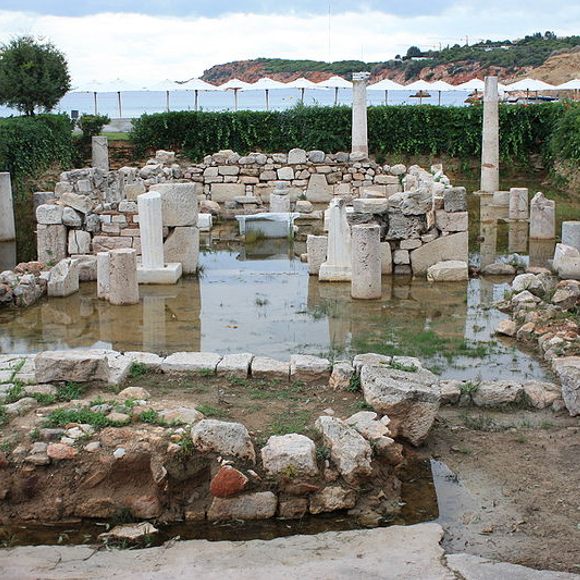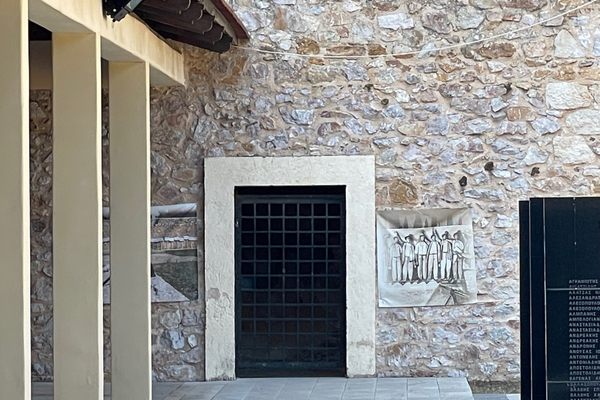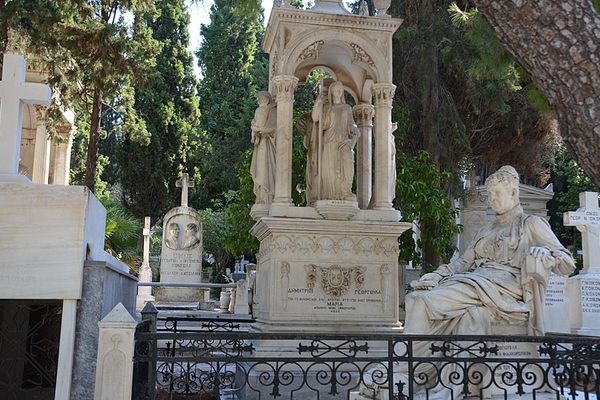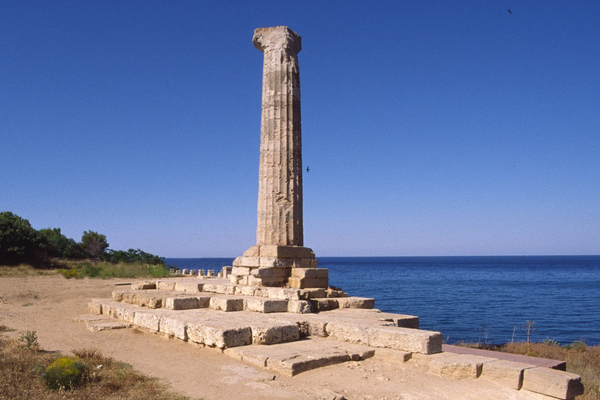Temple of Apollo Zoster
These ruins of a sacred Ancient Greek temple stand next to a luxurious modern resort.
In 1924, children from the Ecclesiastical Orphanage of Vouliagmeni were playing on a nearby beach when they uncovered the tip of an ancient column. They began digging, leading these amateur archaeologists to discover more columns, marble pedestals, and other relics.
Formal excavations began in 1926 and by the end of 1927, professional archaeologists had unearthed the temple and dated it to the sixth century BCE. One of the relics had an inscription that identified the site as the Temple to Apollo Zoster. The ancients believed that Leto, the Goddess of Motherhood, had to loosen her zoster (belt) at this site to give birth to Apollo and Artemis, making this site not only one of the most sacred sanctuaries in ancient Greece, but one of the most scenic.
The temple is made of limestone and is rectangular, measuring 20 by 36 feet at the base. The floor consists of large rectangular slabs, which was uncommon for this era. The temple was later surrounded by an arcade with columns that created a continuous porch around it. Further excavations determined it was converted to a Christian church in the fourth century CE.
In 1936, another ancient building was discovered nearby, and it is believed it was used either as a hostel for pilgrims or lodging for priests. In 1960, excavations revealed a cistern just north of the temple. The temple is just above sea level, so it often flooded during spring tides and heavy rains. In 2009, steps were taken to correct this and it now drains properly.
Due to other important finds in the area, the Greek government designated the entire peninsula as an archaeological site in 2013 and in 2016, a new master plan for the area was approved that includes a pedestrian path from the temple to a nearby hill which contains the remains of a fort dating to 300 BCE.
In 1959, a luxury resort was built next to the temple and built cabanas, volleyball courts, and other amenities now stand near the ancient ruins.
Know Before You Go
Today, the temple is located within the Four Seasons Resort, although the actual temple site is still owned by and remains under the control of the Greek government.





















Follow us on Twitter to get the latest on the world's hidden wonders.
Like us on Facebook to get the latest on the world's hidden wonders.
Follow us on Twitter Like us on Facebook